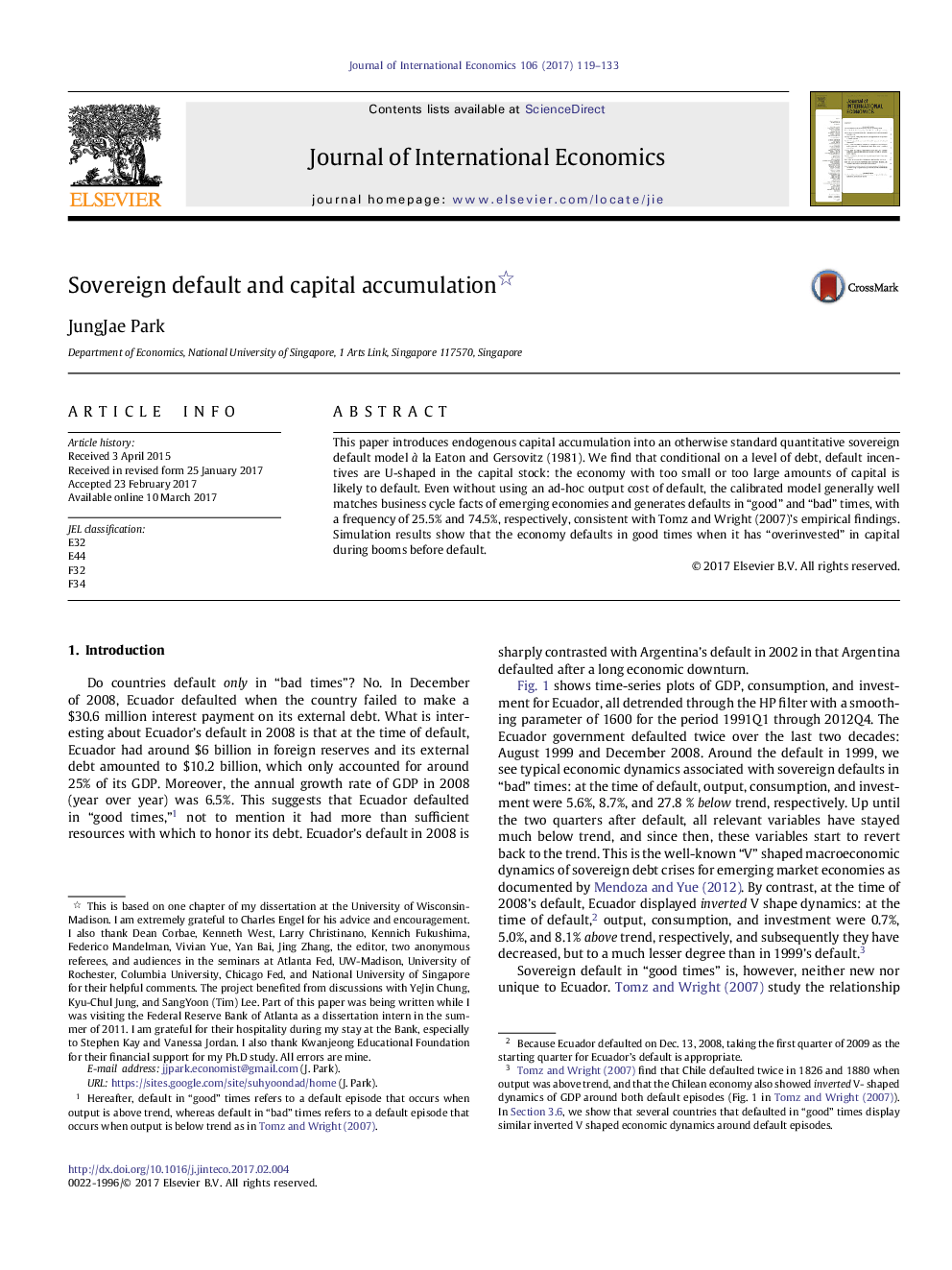| Article ID | Journal | Published Year | Pages | File Type |
|---|---|---|---|---|
| 5100937 | Journal of International Economics | 2017 | 15 Pages |
Abstract
This paper introduces endogenous capital accumulation into an otherwise standard quantitative sovereign default model à la Eaton and Gersovitz (1981). We find that conditional on a level of debt, default incentives are U-shaped in the capital stock: the economy with too small or too large amounts of capital is likely to default. Even without using an ad-hoc output cost of default, the calibrated model generally well matches business cycle facts of emerging economies and generates defaults in “good” and “bad” times, with a frequency of 25.5% and 74.5%, respectively, consistent with Tomz and Wright (2007)'s empirical findings. Simulation results show that the economy defaults in good times when it has “overinvested” in capital during booms before default.
Related Topics
Social Sciences and Humanities
Economics, Econometrics and Finance
Economics and Econometrics
Authors
JungJae Park,
